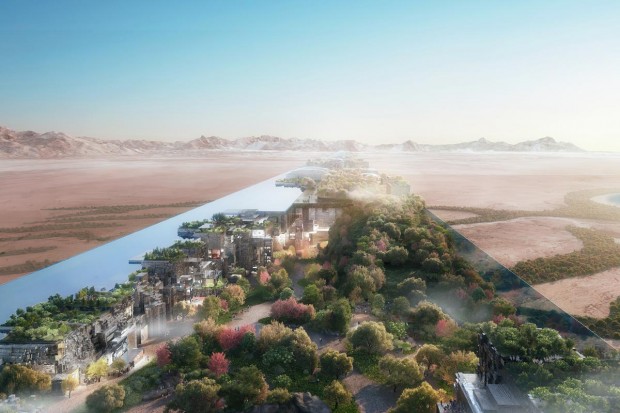Amid financial challenges, Saudi Arabia's grand vision for 'The Line,' spanning 106 miles, is reportedly being significantly reduced to a mere 1.5 miles. As a result, the project is initiating the unfortunate process of terminating the employment of construction workers currently engaged in the endeavor.

(Photo : Oil&Gas/NEOM)
Financial Challenges on the Project
As a component of the nation's ambitious and forward-thinking NEOM initiative, The Line was initially designed to accommodate approximately 1.5 million inhabitants by the conclusion of the current decade. As mentioned, there are aspirations to expand its overall capacity to nine million individuals.
However, Bloomberg has recently published a report citing documents and sources with direct knowledge of the 106-mile project and individuals acquainted with the undertaking that the development will span a mere 1.5 miles and accommodate fewer than 300,000 inhabitants by 2030. In response to the reduction in the building of The Line, at least one contractor has begun terminating the employment of people it employs on the site.
Moreover, an attempt was made to rethink urban planning through the project, which was estimated to cost $1.5 trillion. Nevertheless, it has been met with skepticism and criticism for a considerable amount of time, not the least of which being the reported killing of many members of the Howeitat tribe who were outraged over intentions to construct on their ancient territory.
In addition, there were rumors that Prince Mohammed's vision for the project was shifting, that the budget had been exceeded, and that the list of essential personnel was constantly moving. Some individuals who participated in the project have described it as being disconnected from reality. Accordingly, the reduction in the size of the Line occurs at a time when the Saudi Arabian sovereign wealth fund has not yet approved the total Neom budget for the year 2024, which is associated with a decrease in cash reserves.
Promotional materials had alluded to a route reminiscent of a science fiction novel that traverses the interior into Tabuk province from its confluence with the Red Sea at the mouth of the Gulf of Aqaba. The linear city, only a few hundred meters wide, was marketed as the future of accessible urban planning. It was reportedly designed to provide people with amenities within close walking distance of their accommodations and areas linked by one of the quickest trains in the world.
Also Read: Hudson's Site Becomes Detroit's Second Tallest Building as Final Steel Beam is Installed
About The Line
The Saudi Arabian government announced in 2021 that it intended to construct The Line. This linear city would stretch for 170 kilometers and consist of two parallel towers 500 meters tall. According to estimates, the Line will be 33 times larger than the city of New York.
In the beginning, the Line was supposed to be home to approximately 1.5 million people by the decade's end. However, there are plans to extend its entire capacity to nine million people eventually. The Line is a component of the ambitious and forward-thinking NEOM project that the country implemented.
As mentioned, renewable energy sources are intended to supply all of The Line's power. Also, it was promoted as a municipality wherein every daily necessity would be conveniently accessible to intruders within a five-minute stroll. Residents would reportedly be granted access to supplementary advantages such as outdoor skiing facilities and a high-speed rail system that required a mere twenty minutes for round-trip travel. By stacking homes, schools, and playgrounds on each other in a manner that planners call 'Zero Gravity Urbanism,' marketing materials offered The Line as a solution to the problem of unrestrained and wasteful urban sprawl.
Related Article: 5 Futuristic Smart Cities Under Construction Around the World







